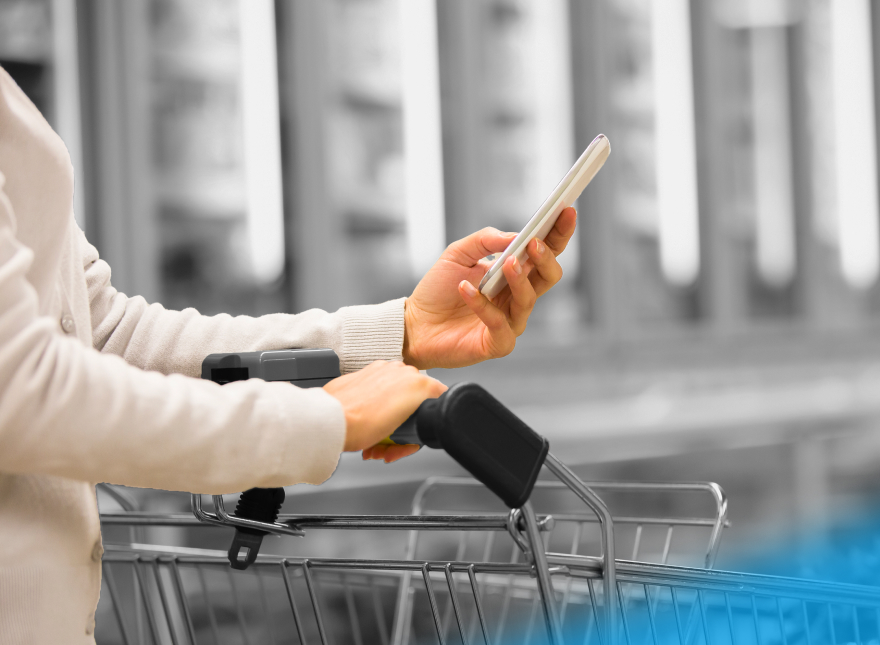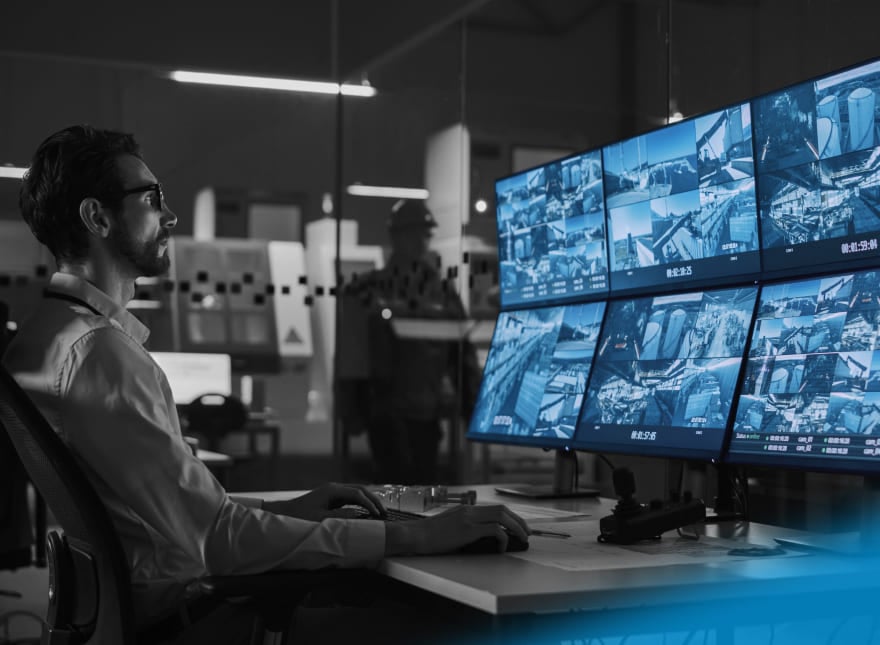Proximity-aware Digital Signage in Action: from Marketing to Health Monitoring
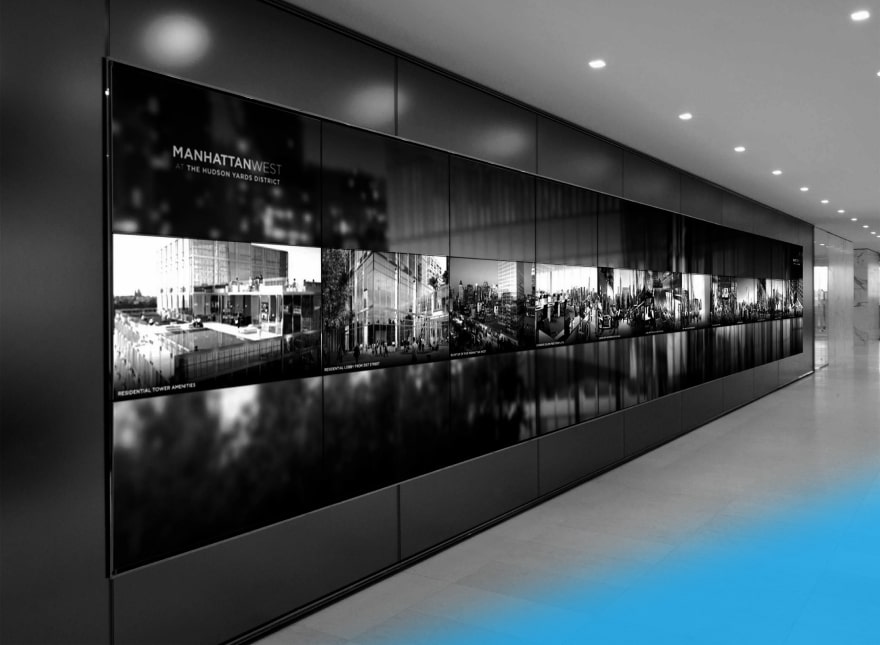
Digital signage is everywhere—from wayfinding displays in hospital lobbies to massive video walls at the entrances of financial buildings. Proximity-aware solutions detect people that are close to digital screens and interact with users without direct physical contact, like visitor counters that calculate how many people look at a given screen.
In this article, we zoom in on the opportunities that proximity-triggered digital signage brings to companies across various industries like retail, transportation, and healthcare. We detail how digital signage helps them decrease operating costs, collect customer data, and deliver relevant messages to their target audience.
Table of Contents
Growing Opportunities for Digital Signage: Key Driving Factors
The overall spread of digital signage solutions and the opportunities they bring are extending. According to Grand View Research, the global digital signage market could reach $31.71 billion by 2025, growing at a CAGR of 8.0% between 2018 and 2025. Solutions for retail and transportation currently demonstrate the highest share; while digital signage for the healthcare, corporate, and hospitality sectors shows significant growth potential.
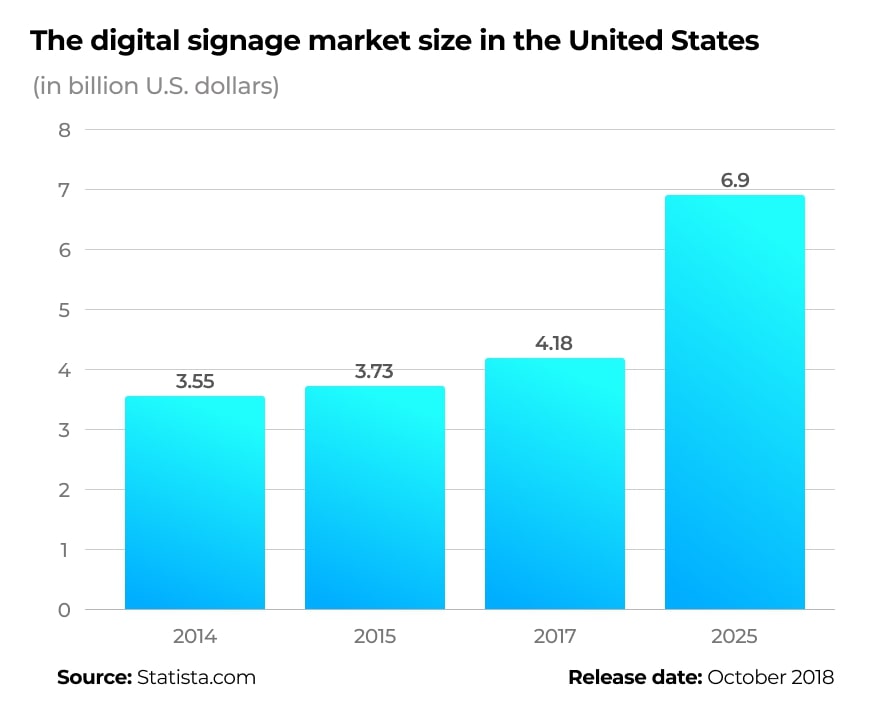
Researchers from Grand View Research and Markets and Markets have highlighted the key factors driving this market. These include:
- The growing availability of digital displays with 4K and 8K technology. High-definition displays make it possible to deliver content with enhanced sharpness and quality. 8K display resolution, in particular, introduces over 16 times the resolution of 1080p full HD.
- The decrease of long-term operational costs. Digital signage decreases spending on paper for print advertising. Moreover, the use of LED-backlit panels results in additional energy savings for those who use digital signage solutions.
- The emergence of IoT and cloud computing. By collecting operational and marketing data, businesses can analyze consumer behavior and make informed decisions about what types of content they broadcast to a particular audience.
- The rise of smart devices connected to the cloud. A tech-savvy generation of customers demands connected experiences, spurring retailers to transform traditional stores into smart stores—i.e., enhance the store environment and broadcast personalized and relevant content smartly.
How Proximity-triggered Signage Works
Proximity-aware digital signage solutions detect people near displays. Digital signage systems identify their presence and trigger a message; there is no need for physical contact. For example, the relevant information can appear when a customer picks up a product near the display.
Digital signage uses LCD, LED, or projection technology to broadcast content. For example, a wall in the lobby of the Legacy Union complex in Charlotte, North Carolina, is an interactive 64-foot-wide by 36-foot-tall screen, one of the worlds’ largest native 4K displays. The wall shows football games, drone footage, advertisements, and digital artwork with ever-changing sound and color that never shows the same visual twice. Passersby can see the artwork through the glassy facade.
It is possible to embed a display into multiple solutions such as kiosks, elevators, or building walls. For instance, the TELUS Innovation Centre in Vancouver turned their static glass doors into 55-inch displays to broadcast AR content on each of the six doors. Screens can demonstrate various types of content—i.e., pictures, 3D graphics, video, live feeds, and slides.
A typical digital signage system relies on three major components:
- A processor
- Connectivity technologies
- A content management system (CMS)
A single display or an entire network of screens can be managed remotely with the help of the CMS; a web portal allows users to schedule and update campaigns. System-on-a-chip technology with an embedded media player powers the content.
Smart signage solutions can incorporate cameras and proximity sensors, accommodate temperature sensors and leverage algorithms to detect abnormal temperatures, and utilize AI algorithms for intelligent data processing and facial recognition. Proximity-awareness can rely on multiple technologies, including geofencing, RFID, and Bluetooth/BLE.
In particular, digital signage coupled with Bluetooth/BLE can be an effective combination in contextual marketing. Beacon-enabled mobile apps catch customer data to broadcast personalized messages. Beacons can trigger both mobile devices and digital signs. This way, a customer entering the store receives the relevant information on their smartphone and sees the screen's message.
When used together with IoT, digital signage helps companies make data-driven decisions and broadcast the right message to the right people, at the right place and time. Smart solutions can collect real-time data about the audience within a designated area, measure customer behavior, and feed this data to AI algorithms.
Proximity-aware Digital Signage Solutions in Action
Digital displays can be placed in various venues such as hospitals, shopping centers, airports, and stadiums. In 2018, the retail and transportation sectors led the digital signage race with over 18% of the total revenue. While digital signage in retail is mainly used for marketing purposes, healthcare professionals leverage the technology to help medical staff perform tests or track patient flow. In education, digital displays can be used by a college administration to broadcast information in an engaging way.
Digital Signage in Retail
Digital signage in retail offers multiple opportunities to advertise the right product at the right time, broadcast personalized messages, and even stimulate impulse purchasing.
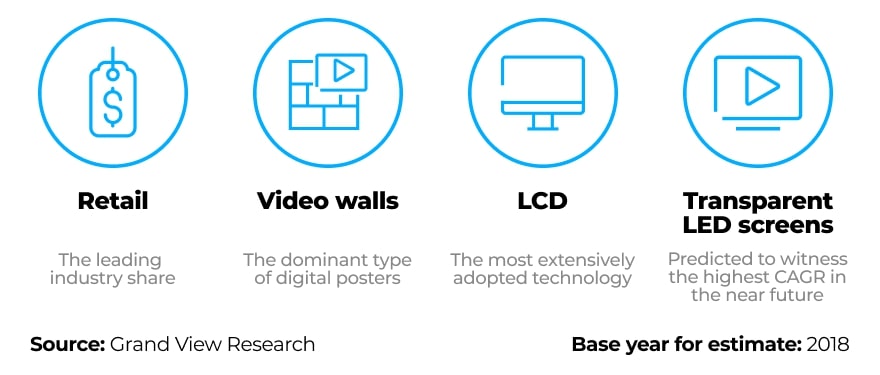
Burberry is an experienced adopter of digital signage solutions. In 2012, the company introduced their so-called “magic mirrors.” When a customer with an RFID-tagged piece of clothing passed by the screen, the mirror showed how the garment looked on the catwalk. The company’s recent solution incorporates Augmented Reality capabilities: an AR mirror allows customers to play with Burberry’s iconic ribbon in real-time and take a selfie.
The COTY Fume Scent Lounge boutique in Toronto reinvented the shopping experience by presenting 10 LCD video wall towers in tandem with two interactive touchscreen displays. Shoppers can search for fragrances based on brand preferences using touchscreens. In the meantime, embedded RFID tags on fragrance bottles and LED lights integrated into the table enable particular brands to show up when selected, thus helping customers identify their ideal scents.
Another Canadian retailer—Jean Coutu Cosmetics—introduced an interactive RFID kiosk that triggers a descriptive video of a cosmetic product, when a customer takes it off a shelf.
Digital Signage in Healthcare
A smart display can work as a receptionist at a hospital admission desk and react each time a patient enters the building. The IoT-connected solution can help navigate hospital facilities and automatically confirm doctor visits. Smart signage, with the help of cameras and sensors, can also track hospital attendance.
The Cleveland Clinic Children’s hospital introduced a different type of proximity triggered solution—an interactive motion wall that entertains patients between appointments in the hospital lobby. The solution uses gesture-tracking technology to respond to slow movements and blends blue, red, and yellow colors to create a mixing paint effect.
Another solution that relaxes patients before doctor visits was created for the Kids Clinic at St. Joseph’s Health Centre in Toronto. Visitors can interact with the immersive table and wall, making gestures that affect various colors, shapes, and other images.
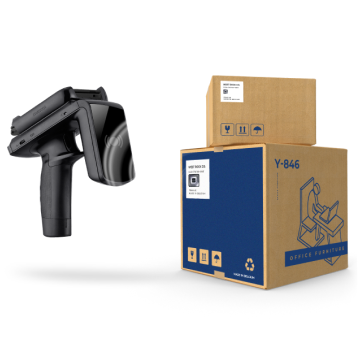
Digital Signage Solutions During COVID-19
The COVID-19 outbreak proved to be both a curse and a blessing for digital signage solutions.
The pandemic forced facial recognition-based traffic counting solutions, like Quividi's Audience Measurement Platform, to adapt to faces covered by masks. Other companies shifted their efforts to create non-touch solutions. The University of Atlanta digital signage system with more than 300 digital signs across the Georgia Tech campus added voice commands to help students easily navigate the grounds.
In the meantime, COVID-19 triggered the development of next-gen solutions like digital signage with temperature monitoring capabilities. For example, the Guardian Kiosk from Advanced Kiosks detects people with a high body temperature and identifies those without masks. The check-in kiosk from LamasaTech goes even farther by printing an ID badge that proves visitors have successfully passed the temperature check.
Magnetic 3D created a hand sanitizer digital signage kiosk that helps users keep their hands germ free while broadcasting ads. Quividi has released an occupancy monitor, which counts people within a venue. The VidiAccess digital display uses mounted cameras to calculate entries and exits, showing the total number of visitors in real time. QL Access Control from Navori also measures visitor traffic in public places, detecting whether visitors are wearing face masks, even identifying the fabric the masks are made of, their shape, and color.
A Final Note
Compared to ordinary displays that do not detect passersby, proximity-aware digital signage brings opportunities to companies looking for new ways to reach their target audience, reduce operational costs, and launch innovative solutions.
Smart displays with the possibility to detect, track, and analyze nearby people help brands personalize their marketing campaigns and avoid overspending. Digital signage introduces many ways for communication. It can be simple signage coupled with a message delivered to a smartphone that’s also a smart mirror, a contactless hand sanitizer dispenser coupled with a display, or a massive video wall that is impossible to miss.
Proximity-triggered solutions can automate routines and minimize human participation, when smart displays work as receptionists at a hospital or a visitor counter at a mass gathering.
Digital signage helps tackle the consequences of the pandemic, and simultaneously offers new business prospects. Novel solutions can feature thermal detection to identify high-temperature individuals, use facial recognition to detect those without masks, and enforce social distancing.
More articles on the topic



